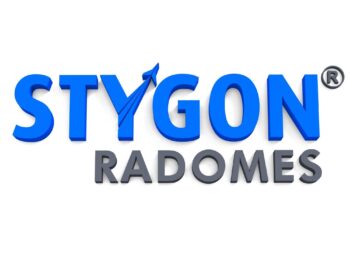Understanding the Structure and Function of a Radar Dome

A radar dome, also known as a radome, is a protective cover that houses radar and communication equipment. It is designed to shield the sensitive components from harsh weather, dust, and environmental conditions while allowing electromagnetic signals to pass through without interference.
Key Components Inside a Radar Dome
1. High-Frequency Radar Antennas for Signal Transmission
At the core of a radar dome lies the radar antenna, which is responsible for transmitting and receiving signals. These antennas vary in size and type, depending on the application. Some commonly used antennas include:
- Parabolic Antennas – Used in satellite communication and weather radar systems.
- Phased Array Antennas – Used in advanced military and air traffic control radars.
- Helical Antennas – Used for GPS and space communication.
2. Waveguides and Feed Systems for Smooth Signal Flow
Waveguides are metal tubes or dielectric structures that direct the radar signals from the transmitter to the antenna. They play a crucial role in minimizing signal loss and ensuring efficient communication.
3. Rotational Mechanisms for Precise Positioning
Many radar domes contain rotational systems that help position the antenna accurately. These mechanisms ensure that the radar can track moving objects efficiently. Some radars, like weather radars and air traffic control systems, require continuous 360-degree rotation.
4. Power Supply and Control Units for Reliable Operation
Inside a radar dome, there are power distribution units and control systems that manage the entire operation of the radar. These units ensure:
- Proper power supply to all components.
- Automation of radar movement and tracking.
- Signal processing for accurate data interpretation.
5. Signal Processing Units for Data Interpretation
A signal processing unit converts raw radar signals into meaningful data. These systems filter noise, amplify weak signals, and process information to be displayed on radar screens. Signal processing is crucial in applications such as:
- Military defense systems – Detecting enemy aircraft and missiles.
- Weather forecasting – Tracking storms and rain patterns.
- Marine navigation – Identifying ships and underwater obstacles.
6. Cooling and Heating Systems for Temperature Control
Since radars generate heat during operation, cooling systems like air conditioning units and ventilation fans prevent overheating. Similarly, in colder regions, heating elements prevent ice formation on the radar dome, ensuring smooth operation.
Why is a Radar Dome Important?

1. Protection from Environmental Factors
A radome protects sensitive radar equipment from:
- Rain, snow, and extreme weather conditions.
- Dust and sand, which can damage internal components.
- Wind and physical damage from external elements.
2. Ensuring Uninterrupted Signal Transmission
A well-designed radar dome allows electromagnetic signals to pass through with minimal interference. This ensures accurate data transmission without signal degradation.
3. Extending the Lifespan of Radar Equipment
By shielding radar components from environmental wear and tear, a radar dome helps improve the longevity of costly equipment. This reduces maintenance and replacement costs.
4. Reducing Radar Signature for Stealth Applications
In military applications, radar domes are designed to reduce the visibility of radar signals, making detection by enemy forces difficult. This is critical in stealth technology.
Applications of Radar Domes

Radar domes are widely used in various fields, including:
- Military and Defense – For surveillance, missile detection, and border security.
- Weather Monitoring – For tracking storms, rainfall, and cyclones.
- Air Traffic Control – For guiding aircraft safely during landing and takeoff.
- Marine Navigation – For detecting ships, icebergs, and underwater objects.
- Space Research – For tracking satellites and deep-space missions.
Conclusion
A radar dome is an essential structure that protects radar systems while ensuring accurate signal transmission. It houses key components such as antennas, waveguides, power systems, and cooling mechanisms that help radars function efficiently in all environments. Investing in a high-quality radome enhances the performance and lifespan of radar equipment.
For high-performance radar domes, check out Stygon Radomes and explore their advanced solutions tailored for different industries.
